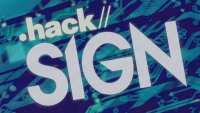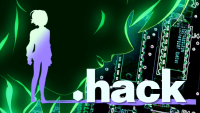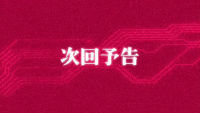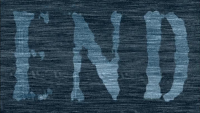SIGN (anime): Difference between revisions
MysteryCorgi (talk | contribs) |
MysteryCorgi (talk | contribs) mNo edit summary |
||
| (23 intermediate revisions by the same user not shown) | |||
| Line 6: | Line 6: | ||
!Next Title | !Next Title | ||
|- | |- | ||
| <center>[[ | | <center>[[AI Buster (Novels)|.hack//AI Buster]] <br/> [[AI buster 2(Novel)|.hack//AI Buster 2]]</center> | ||
| <center> [[ | | <center> [[SIGN (anime)|.hack//SIGN]] <br/> [[Wotan's Spear (story)|AI buster 2 Wotan's Spear (Story #2)]]</center> | ||
| [[ZERO Phantom Pain (Novel)|.hack//ZERO]] | | [[ZERO Phantom Pain (Novel)|.hack//ZERO]] | ||
|} | |} | ||
</center> | </center> | ||
| Line 24: | Line 24: | ||
|Published by = Bandai Visual, Funimation | |Published by = Bandai Visual, Funimation | ||
}} | }} | ||
'''''.hack//SIGN''''' (ドットハック サイン, pronounced "dot hack sign") is a Japanese anime television series that aired from April to September 2002.<ref>[https://en.wikipedia.org/wiki/.hack//Sign Wikipedia]</ref> The show was an early entry of the .hack franchise, which tells a cohesive story over the course of various multimedia releases | '''''.hack//SIGN''''' (ドットハック サイン, pronounced "dot hack sign") is a Japanese anime television series that aired from April to September 2002.<ref>[https://en.wikipedia.org/wiki/.hack//Sign Wikipedia]</ref> The show was an early entry of the .hack franchise, which tells a cohesive story over the course of various multimedia releases. <br/> | ||
The series was produced by studio Bee Train and Bandai Visual. 26 episodes were aired on TV Tokyo<ref>[https://myanimelist.net/anime/producer/16/tv_tokyo TV Tokyo] on My Anime List</ref>, while additional OVA episodes were made available through home media releases. The events of the series were set in an alternate history and took place in the then-future of 2010. As the first anime title for the series, the release was timed to work in conjunction with the release of the '''[[Games Tetralogy]]''' as an introduction to the setting of ''[[ | The series was produced by studio Bee Train and Bandai Visual. 26 episodes were aired on TV Tokyo<ref>[https://myanimelist.net/anime/producer/16/tv_tokyo TV Tokyo] on My Anime List</ref>, while additional OVA episodes were made available through home media releases. The events of the series were set in an alternate history and took place in the then-future of 2010. As the first anime title for the series, the release was timed to work in conjunction with the release of the '''[[Games Tetralogy]]''' as an introduction to the setting of ''[[Project .hack]]''. <br/> | ||
==Synopsis== | ==Synopsis== | ||
Is it a game? Or is it a world? .hack//SIGN the anime series… | Is it a game? Or is it a world? .hack//SIGN the anime series… | ||
“The World” is immersive virtual gaming environment of the future. Millions of players log on each day to test their skills in virtual adventures and battles. But when reality and virtual reality collide, a whole new adventure unfolds. | “The World” is immersive virtual gaming environment of the future. Millions of players log on each day to test their skills in virtual adventures and battles. But when reality and virtual reality collide, a whole new adventure unfolds. | ||
.hack//SIGN boasts character designs by famed illustrator Yoshiyuki Sadamoto (Neon Genesis Evangelion and Wings of Honneamise), an engaging and immersive storyline scripted by Kazunori Itō (Ghost in the Shell and Patlabor), and directed by Kōichi Mashimo (Noir and Irresponsible Captain Tylor). | .hack//SIGN boasts character designs by famed illustrator Yoshiyuki Sadamoto (Neon Genesis Evangelion and Wings of Honneamise), an engaging and immersive storyline scripted by Kazunori Itō (Ghost in the Shell and Patlabor), and directed by Kōichi Mashimo (Noir and Irresponsible Captain Tylor). | ||
''.hack//SIGN'' explores the plight of a character who finds himself trapped in an online game called [[The World]] and the players who try to solve the mystery behind his predicament and help him find a way back to reality | ''.hack//SIGN'' explores the plight of a character who finds himself trapped in an online game called [[The World]] and the players who try to solve the mystery behind his predicament and help him find a way back to reality. <br/> | ||
''.hack//SIGN'' is a cerebral exploration of the hazy intersection of offline and online life during the early days of mass communication networks being adopted worldwide and made available to the public. The .hack series poses questions about the risks of opening a network initially limited for use by vital government entities and businesses to the public for entertainment and social interactions, and how damage to a game could impact the rest of the net and the offline world beyond it. | ''.hack//SIGN'' is a cerebral exploration of the hazy intersection of offline and online life during the early days of mass communication networks being adopted worldwide and made available to the public. The .hack series poses questions about the risks of opening a network initially limited for use by vital government entities and businesses to the public for entertainment and social interactions, and how damage to a game could impact the rest of the net and the offline world beyond it. At the time of release, .hack//SIGN was notable for its unique premise and exploration of deep themes such as identity, escapism, and interpersonal connections. <br/> | ||
''SIGN'' introduces some of these questions on a smaller, more intimate scale, as ordinary players are forced to reckon with a game that is becoming increasingly intertwined with far-reaching consequences that impact the offline world. The series is unusual when compared to other anime that explore the concept of being trapped in a game, in that it isn't focused on action or game stats, but instead focuses on the relationships of the characters, the motivations of the players, as well as the appeal and drawbacks of escapism. <br/> | ''SIGN'' introduces some of these questions on a smaller, more intimate scale, as ordinary players are forced to reckon with a game that is becoming increasingly intertwined with far-reaching consequences that impact the offline world. The series is unusual when compared to other anime that explore the concept of being [[trapped in a game]], in that it isn't focused on action or game stats, but instead focuses on the relationships of the characters, the motivations of the players, as well as the appeal and drawbacks of escapism. <br/> | ||
===Plot=== | ===Plot=== | ||
''Main articles: '''[[ | ''Main articles: '''[[SIGN Episodes]]''''' <br/> | ||
The story of ''.hack//SIGN'' follows [[Tsukasa]], a player in an online game called The World who wakes up at the bottom of a dungeon. His memory is hazy and he is disoriented, so he flees after encountering another player. This brings him | The story of ''.hack//SIGN'' follows [[Tsukasa]], a player in an online game called The World who wakes up at the bottom of a dungeon. His memory is hazy and he is disoriented, so he flees after encountering another player. This brings him into an encounter with members of the [[Crimson Knights]], a guild of regular players who are dedicated to upholding the in-game peace and volunteer to support the system administrators in an unofficial capacity. | ||
Shortly thereafter, he realizes that he cannot log out of the game. When his attempt to log out fails, he realizes that he is not sitting in front of a computer terminal, which | Shortly thereafter, he realizes that he cannot log out of the game. When his attempt to log out fails, he realizes that he is not sitting in front of a [[Computer Terminal|computer terminal]], which calls to question the status of his body, since his mind appears to be trapped in the game. The longer he remains in the game, the more his unusual predicament catches the attention of other players, who each have their own motivations for getting involved with Tsukasa, not all of which are altruistic. <br/> | ||
As time goes on, the rules of the game appear to break in increasingly alarming ways; invincible monsters, illegal characters, inaccessible areas, and players being knocked unconscious while playing the game. All the while, rumors pass from player to player and a hunt for [[The Key of the Twilight| | As time goes on, the rules of the game appear to break in increasingly alarming ways; invincible monsters, illegal characters, inaccessible areas, and players being knocked unconscious while playing the game. All the while, rumors pass from player to player and a hunt for a hidden item that supposedly [[The Key of the Twilight|surpasses the system]] begins. As a [[Player Character|player character]] who possesses impossible abilities and seemingly exists outside of the game's parameters, Tsukasa is swept up in the hunt for answers.<br/> <br/> | ||
==Characters== | ==Characters== | ||
''Main articles: '''[[ | ''Main articles: '''[[SIGN Characters]]'''''<br/> | ||
<center> | <center> | ||
{| class="wikitable" | {| class="wikitable" | ||
|- | |- | ||
! [[Tsukasa]] | ! [[Tsukasa]]!! [[Mimiru]]!! [[Bear]]!! [[Subaru]]!! [[Silver Knight]]!! [[Macha (SIGN)|Macha]] | ||
|- | |- | ||
| [[File:Icon tsukasa sign.png|150px |link=Tsukasa|Tsukasa]] || [[File:Sign mimiru.png|150px |link=Mimiru|Mimiru]] || [[File:Sign bear.png|150px |link=Bear|Bear]] || [[File:Sign subaru.png|150px |link=Subaru|Subaru]] || [[File:Sign ginkan.png|150px |link=Silver Knight|Silver Knight]] || [[File:Sign macha.png|150px |link=Macha (SIGN)|Macha]] | | [[File:Icon tsukasa sign.png|150px |link=Tsukasa|Tsukasa]] || [[File:Sign mimiru.png|150px |link=Mimiru|Mimiru]] || [[File:Sign bear.png|150px |link=Bear|Bear]] || [[File:Sign subaru.png|150px |link=Subaru|Subaru]] || [[File:Sign ginkan.png|150px |link=Silver Knight|Silver Knight]] || [[File:Sign macha.png|150px |link=Macha (SIGN)|Macha]] | ||
| Line 52: | Line 52: | ||
{| class="wikitable" | {| class="wikitable" | ||
|- | |- | ||
! [[Sora]] !! [[BT]] | ! [[Sora]]!! [[BT]]!! [[Crim]]!! [[A-20]]!! [[Helba (SIGN)|Helba]]!! [[Balmung (SIGN)|Balmung]] | ||
|- | |- | ||
| [[File:Sign sora.png|150px |link=Sora|Sora]] || [[File:Sign bt.png|150px |link=BT|BT]] || [[File:Sign crim.png|150px |link=Crim|Crim]] || [[File:Sign a20.png|150px |link=A-20|A-20]] || [[File:Sign helba.png|150px |link=Helba (SIGN)|Helba]] || [[File:Sign balmung.png|150px |link=Balmung (SIGN)|Balmung]] | | [[File:Sign sora.png|150px |link=Sora|Sora]] || [[File:Sign bt.png|150px |link=BT|BT]] || [[File:Sign crim.png|150px |link=Crim|Crim]] || [[File:Sign a20.png|150px |link=A-20|A-20]] || [[File:Sign helba.png|150px |link=Helba (SIGN)|Helba]] || [[File:Sign balmung.png|150px |link=Balmung (SIGN)|Balmung]] | ||
| Line 61: | Line 61: | ||
==Setting== | ==Setting== | ||
''Main articles: '''[[ | ''Main articles: '''[[SIGN Setting]]''''' <br/> | ||
The anime predominantly takes place within the online game [[The World]]. Within the game world are [[Root Towns (SIGN)|crowded social hubs]], various [[Fields (SIGN)|untamed landscapes]], and isolated [[Secret Areas (SIGN)|secret areas]]. <br/> | |||
Scenes depicting offline events are occasionally interspersed throughout the series. These scenes are depicted in desaturated sepia-tones, contrasting with the vivid colors of the game's scenery. These scenes frequently hide characters' faces and give intentionally vague clues for audience members figure out who plays which in-game character and how the scenes connect in the plot. <br/> | |||
==Production== | ==Production== | ||
''Main articles: '''[[SIGN Production]]'''''<br/> | |||
.hack//SIGN was directed by Koichi Mashimo, the founder and CEO of Bee Train, the studio which produced the anime.<ref>[http://www.beetrain.co.jp/contents/works/sign/ BeeTrain Website]</ref> Bee Train also produced the Liminality OVA, Gift OVA, Legend of the Twilight TV Anime, and Roots TV anime. <br> | |||
.hack//SIGN was directed by Koichi Mashimo, the founder and CEO of Bee Train, the studio which produced the anime.<ref>[http://www.beetrain.co.jp/contents/works/sign/ BeeTrain Website]</ref> | |||
Bee Train also produced the Liminality, Gift, | |||
===Broadcast History=== | ===Broadcast History=== | ||
''Main articles: '''[[SIGN Broadcast History]]'''''<br/> | ''Main articles: '''[[SIGN Broadcast History]]'''''<br/> | ||
.hack//SIGN premiered on Japan's TV Tokyo on 04 April 2002 and ran until 25 September 2002. <br/> | .hack//SIGN premiered on Japan's TV Tokyo on 04 April 2002 and ran until 25 September 2002. <br/> | ||
The English dub was distributed throughout North America by Bandai Entertainment. In the United States, the anime premiered on 01 February 2003 and ran until 04 April 2004. Initially, the series aired during Cartoon Network's Toonami: Super Saturday block from 01 February 2003 to 22 February 2003. The block's cancellation prompted the show to be moved to the channel's Saturday Video Entertainment System (SVES), which began on 01 March 2003. Due to the schedule shift, the next episode didn't air until 28 March 2003. <br/> | The English dub was distributed throughout North America by Bandai Entertainment. In the United States, the anime premiered on 01 February 2003 and ran until 04 April 2004. Initially, the series aired during Cartoon Network's Toonami: Super Saturday block from 01 February 2003 to 22 February 2003. The block's cancellation prompted the show to be moved to the channel's Saturday Video Entertainment System (SVES), which began on 01 March 2003. Due to the schedule shift, the next episode didn't air until 28 March 2003. <br/> | ||
===Streaming=== | |||
''Main articles: '''[[SIGN Production#Streaming|Streaming]]'''''<br/> | |||
* AnimeLab (Australia and New Zealand) | * AnimeLab (Australia and New Zealand) | ||
* Crunchyroll (USA, Canada) | * Crunchyroll (USA, Canada) | ||
* Hulu | * Hulu | ||
* Tubi TV | * Tubi TV | ||
== | |||
* | ===Advertisement Campaigns=== | ||
* | * [[Magazine Advertisements (SIGN)|Magazine Advertisements]] | ||
* | * [[Promotional Videos (SIGN)|Promotional Videos]] | ||
* [[Web Media (SIGN)|Web Media]] | |||
==Media== | ==Media== | ||
''Main articles: '''[[:SIGN | ===Music=== | ||
''Main articles: '''[[SIGN Music]]''''' <br/> | |||
The score was composed by Yuki Kajiura. This was the second time she worked with Mashimo, after having done the score for Noir. She went on to do music for other Bee Train titles, including other .hack titles. | |||
=== Images === | |||
<center> | |||
<gallery mode="nolines" widths="200" perrow="3"> | |||
File:Signlogo op.png | |||
File:Sign bumper.png | |||
File:Sign bumper2.png | |||
File:Sign titlecard next.png | |||
File:Sign titlecard end.png | |||
File:Sign credits titlecard series.png | |||
</gallery> | |||
</center> | |||
==Merchandise== | |||
''Main articles: '''[[:Category:SIGN Merchandise]]''''' <br/> | |||
.hack//SIGN had various home video releases as well as novelty items for collectors around the world. <br> | |||
==References== | ==References== | ||
| Line 110: | Line 117: | ||
[[Category:Anime]][[Category:Media]] | [[Category:Anime]][[Category:Media]] | ||
{{SIGN Anime Navbox}} | |||
Latest revision as of 22:41, 15 January 2025
| Previous Title | Current Title | Next Title |
|---|---|---|
.hack//AI Buster 2 |
AI buster 2 Wotan's Spear (Story #2) |
.hack//ZERO |
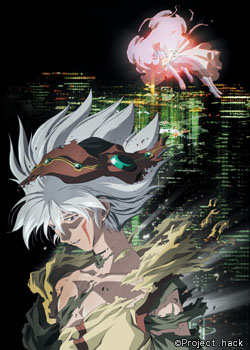
| |
.hack//SIGN
| |
Japanese, English,
| |
Publications
|
|
Release Dates
|
|
Format
|
DVD, VHS, UMD, Streaming
|
Production
|
BeeTrain
|
Published by
|
Bandai Visual, Funimation
|
.hack//SIGN (ドットハック サイン, pronounced "dot hack sign") is a Japanese anime television series that aired from April to September 2002.[1] The show was an early entry of the .hack franchise, which tells a cohesive story over the course of various multimedia releases.
The series was produced by studio Bee Train and Bandai Visual. 26 episodes were aired on TV Tokyo[2], while additional OVA episodes were made available through home media releases. The events of the series were set in an alternate history and took place in the then-future of 2010. As the first anime title for the series, the release was timed to work in conjunction with the release of the Games Tetralogy as an introduction to the setting of Project .hack.
Synopsis
Is it a game? Or is it a world? .hack//SIGN the anime series… “The World” is immersive virtual gaming environment of the future. Millions of players log on each day to test their skills in virtual adventures and battles. But when reality and virtual reality collide, a whole new adventure unfolds. .hack//SIGN boasts character designs by famed illustrator Yoshiyuki Sadamoto (Neon Genesis Evangelion and Wings of Honneamise), an engaging and immersive storyline scripted by Kazunori Itō (Ghost in the Shell and Patlabor), and directed by Kōichi Mashimo (Noir and Irresponsible Captain Tylor).
.hack//SIGN explores the plight of a character who finds himself trapped in an online game called The World and the players who try to solve the mystery behind his predicament and help him find a way back to reality.
.hack//SIGN is a cerebral exploration of the hazy intersection of offline and online life during the early days of mass communication networks being adopted worldwide and made available to the public. The .hack series poses questions about the risks of opening a network initially limited for use by vital government entities and businesses to the public for entertainment and social interactions, and how damage to a game could impact the rest of the net and the offline world beyond it. At the time of release, .hack//SIGN was notable for its unique premise and exploration of deep themes such as identity, escapism, and interpersonal connections.
SIGN introduces some of these questions on a smaller, more intimate scale, as ordinary players are forced to reckon with a game that is becoming increasingly intertwined with far-reaching consequences that impact the offline world. The series is unusual when compared to other anime that explore the concept of being trapped in a game, in that it isn't focused on action or game stats, but instead focuses on the relationships of the characters, the motivations of the players, as well as the appeal and drawbacks of escapism.
Plot
Main articles: SIGN Episodes
The story of .hack//SIGN follows Tsukasa, a player in an online game called The World who wakes up at the bottom of a dungeon. His memory is hazy and he is disoriented, so he flees after encountering another player. This brings him into an encounter with members of the Crimson Knights, a guild of regular players who are dedicated to upholding the in-game peace and volunteer to support the system administrators in an unofficial capacity.
Shortly thereafter, he realizes that he cannot log out of the game. When his attempt to log out fails, he realizes that he is not sitting in front of a computer terminal, which calls to question the status of his body, since his mind appears to be trapped in the game. The longer he remains in the game, the more his unusual predicament catches the attention of other players, who each have their own motivations for getting involved with Tsukasa, not all of which are altruistic.
As time goes on, the rules of the game appear to break in increasingly alarming ways; invincible monsters, illegal characters, inaccessible areas, and players being knocked unconscious while playing the game. All the while, rumors pass from player to player and a hunt for a hidden item that supposedly surpasses the system begins. As a player character who possesses impossible abilities and seemingly exists outside of the game's parameters, Tsukasa is swept up in the hunt for answers.
Characters
Main articles: SIGN Characters
| Tsukasa | Mimiru | Bear | Subaru | Silver Knight | Macha |
|---|---|---|---|---|---|
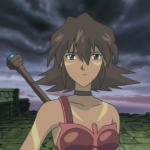 |
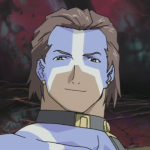 |
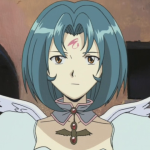 |
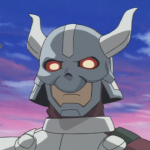 |
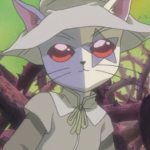
|
| Sora | BT | Crim | A-20 | Helba | Balmung |
|---|---|---|---|---|---|
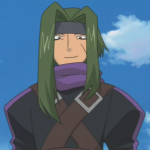 |
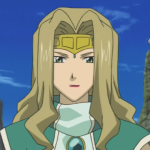 |
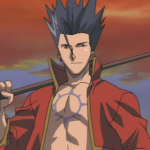 |
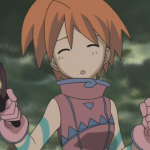 |
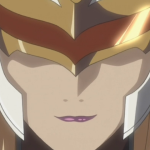 |
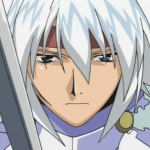
|
Setting
Main articles: SIGN Setting
The anime predominantly takes place within the online game The World. Within the game world are crowded social hubs, various untamed landscapes, and isolated secret areas.
Scenes depicting offline events are occasionally interspersed throughout the series. These scenes are depicted in desaturated sepia-tones, contrasting with the vivid colors of the game's scenery. These scenes frequently hide characters' faces and give intentionally vague clues for audience members figure out who plays which in-game character and how the scenes connect in the plot.
Production
Main articles: SIGN Production
.hack//SIGN was directed by Koichi Mashimo, the founder and CEO of Bee Train, the studio which produced the anime.[3] Bee Train also produced the Liminality OVA, Gift OVA, Legend of the Twilight TV Anime, and Roots TV anime.
Broadcast History
Main articles: SIGN Broadcast History
.hack//SIGN premiered on Japan's TV Tokyo on 04 April 2002 and ran until 25 September 2002.
The English dub was distributed throughout North America by Bandai Entertainment. In the United States, the anime premiered on 01 February 2003 and ran until 04 April 2004. Initially, the series aired during Cartoon Network's Toonami: Super Saturday block from 01 February 2003 to 22 February 2003. The block's cancellation prompted the show to be moved to the channel's Saturday Video Entertainment System (SVES), which began on 01 March 2003. Due to the schedule shift, the next episode didn't air until 28 March 2003.
Streaming
Main articles: Streaming
- AnimeLab (Australia and New Zealand)
- Crunchyroll (USA, Canada)
- Hulu
- Tubi TV
Advertisement Campaigns
Media
Music
Main articles: SIGN Music
The score was composed by Yuki Kajiura. This was the second time she worked with Mashimo, after having done the score for Noir. She went on to do music for other Bee Train titles, including other .hack titles.
Images
Merchandise
Main articles: Category:SIGN Merchandise
.hack//SIGN had various home video releases as well as novelty items for collectors around the world.
References
| |||||||||||||||||||||||||||
